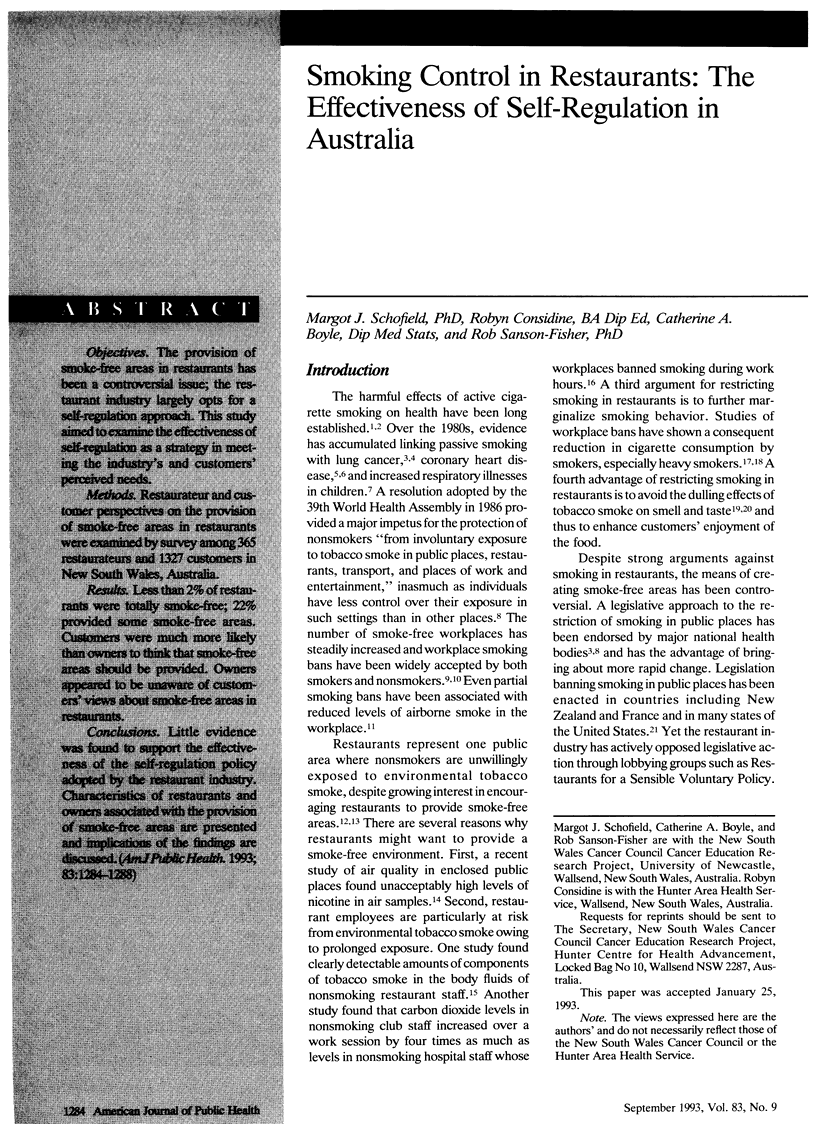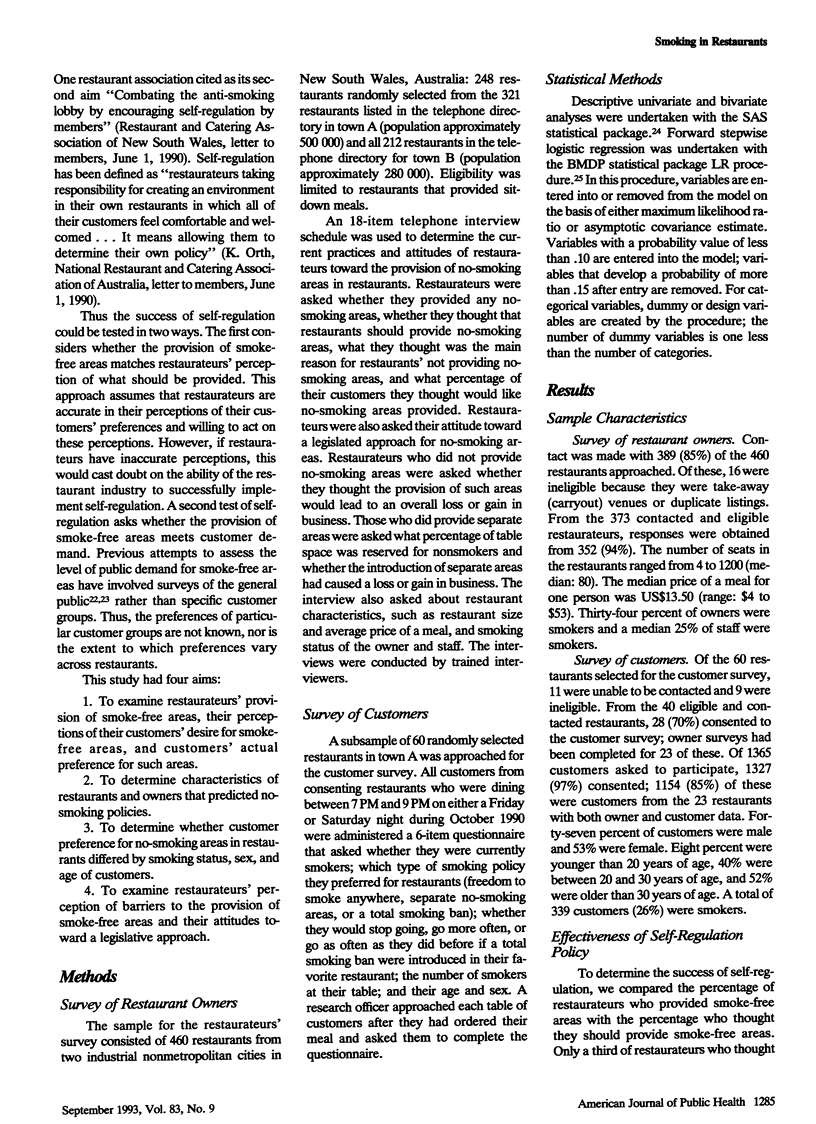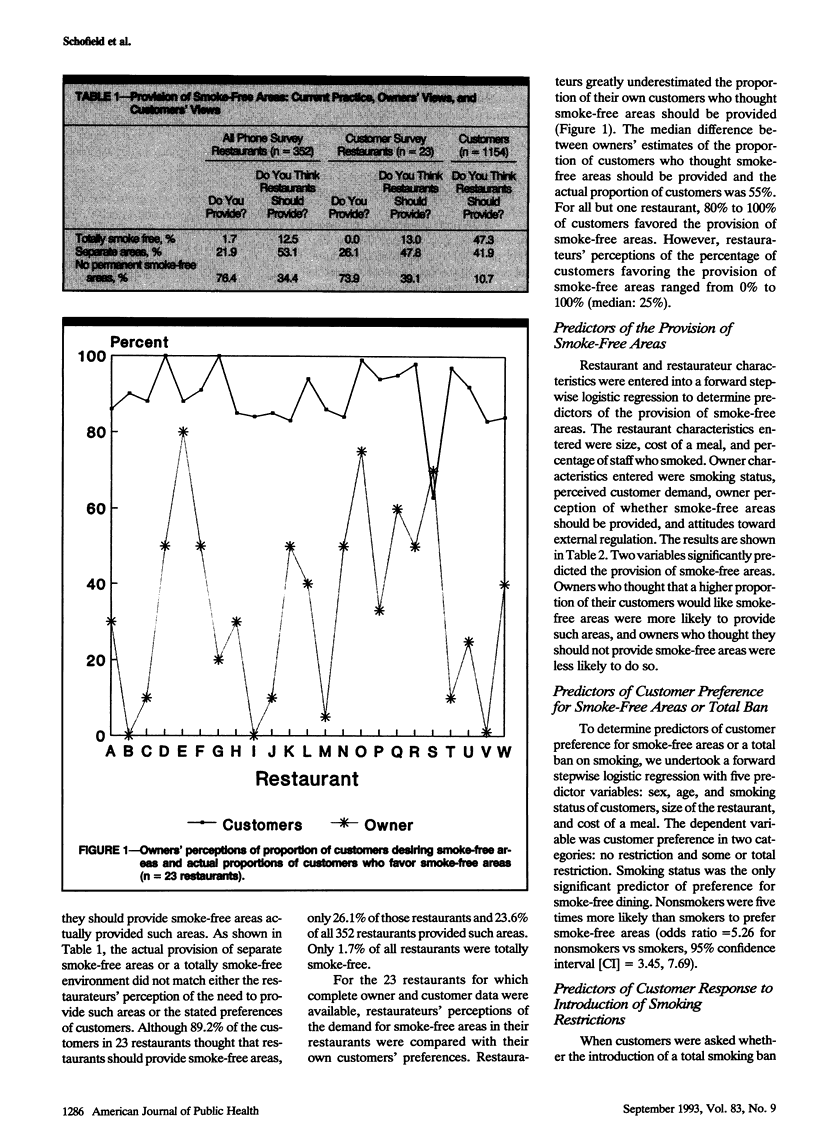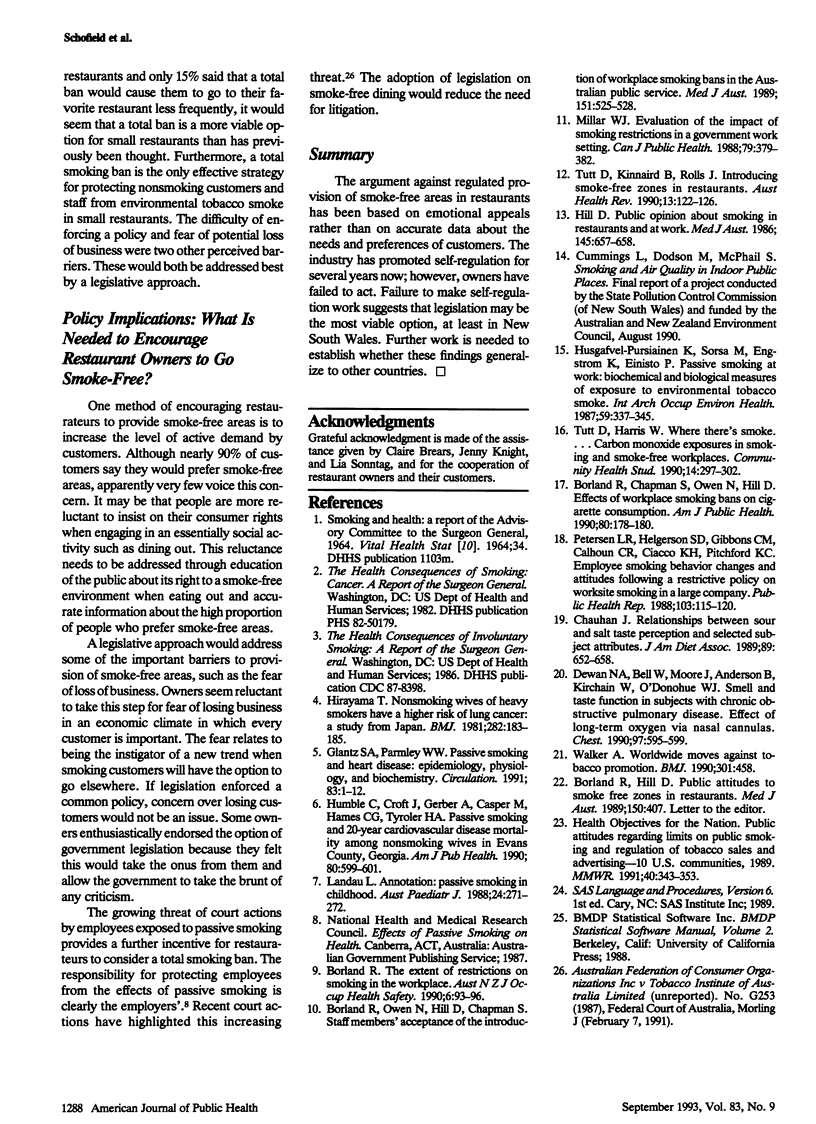Abstract
OBJECTIVES. The provision of smoke-free areas in restaurants has been a controversial issue; the restaurant industry largely opts for a self-regulation approach. This study aimed to examine the effectiveness of self-regulation as a strategy in meeting the industry's and customers' perceived needs. METHODS. Restaurateur and customer perspectives on the provision of smoke-free areas in restaurants were examined by survey among 365 restaurateurs and 1327 customers in New South Wales, Australia. RESULTS. Less than 2% of restaurants were totally smoke-free; 22% provided some smoke-free areas. Customers were much more likely than owners to think that smoke-free areas should be provided. Owners appeared to be unaware of customers' views about smoke-free areas in restaurants. CONCLUSIONS. Little evidence was found to support the effectiveness of the self-regulation policy adopted by the restaurant industry. Characteristics of restaurants and owners associated with the provision of smoke-free areas are presented and implications of the findings are discussed.
Full text
PDF




Selected References
These references are in PubMed. This may not be the complete list of references from this article.
- Borland R., Chapman S., Owen N., Hill D. Effects of workplace smoking bans on cigarette consumption. Am J Public Health. 1990 Feb;80(2):178–180. doi: 10.2105/ajph.80.2.178. [DOI] [PMC free article] [PubMed] [Google Scholar]
- Borland R., Hill D. Public attitudes to smoke-free zones in restaurants. Med J Aust. 1989 Apr 3;150(7):407–407. doi: 10.5694/j.1326-5377.1989.tb136539.x. [DOI] [PubMed] [Google Scholar]
- Borland R., Owen N., Hill D., Chapman S. Staff members' acceptance of the introduction of workplace smoking bans in the Australian public service. Med J Aust. 1989 Nov 6;151(9):525–528. doi: 10.5694/j.1326-5377.1989.tb128500.x. [DOI] [PubMed] [Google Scholar]
- Chauhan J. Relationships between sour and salt taste perception and selected subject attributes. J Am Diet Assoc. 1989 May;89(5):652–658. [PubMed] [Google Scholar]
- Dewan N. A., Bell C. W., Moore J., Anderson B., Kirchain W., O'Donohue W. J., Jr Smell and taste function in subjects with chronic obstructive pulmonary disease. Effect of long-term oxygen via nasal cannulas. Chest. 1990 Mar;97(3):595–599. doi: 10.1378/chest.97.3.595. [DOI] [PubMed] [Google Scholar]
- Glantz S. A., Parmley W. W. Passive smoking and heart disease. Epidemiology, physiology, and biochemistry. Circulation. 1991 Jan;83(1):1–12. doi: 10.1161/01.cir.83.1.1. [DOI] [PubMed] [Google Scholar]
- Hill D. Public opinion about smoking in restaurants and at work. Med J Aust. 1986 Dec 1;145(11-12):657–658. doi: 10.5694/j.1326-5377.1986.tb139538.x. [DOI] [PubMed] [Google Scholar]
- Hirayama T. Non-smoking wives of heavy smokers have a higher risk of lung cancer: a study from Japan. Br Med J (Clin Res Ed) 1981 Jan 17;282(6259):183–185. doi: 10.1136/bmj.282.6259.183. [DOI] [PMC free article] [PubMed] [Google Scholar]
- Humble C., Croft J., Gerber A., Casper M., Hames C. G., Tyroler H. A. Passive smoking and 20-year cardiovascular disease mortality among nonsmoking wives, Evans County, Georgia. Am J Public Health. 1990 May;80(5):599–601. doi: 10.2105/ajph.80.5.599. [DOI] [PMC free article] [PubMed] [Google Scholar]
- Husgafvel-Pursiainen K., Sorsa M., Engström K., Einistö P. Passive smoking at work: biochemical and biological measures of exposure to environmental tobacco smoke. Int Arch Occup Environ Health. 1987;59(4):337–345. doi: 10.1007/BF00405277. [DOI] [PubMed] [Google Scholar]
- Landau L. Passive smoking in childhood. Aust Paediatr J. 1988 Oct;24(5):271–272. doi: 10.1111/j.1440-1754.1988.tb01359.x. [DOI] [PubMed] [Google Scholar]
- Millar W. J. Evaluation of the impact of smoking restrictions in a government work setting. Can J Public Health. 1988 Sep-Oct;79(5):379–382. [PubMed] [Google Scholar]
- Petersen L. R., Helgerson S. D., Gibbons C. M., Calhoun C. R., Ciacco K. H., Pitchford K. C. Employee smoking behavior changes and attitudes following a restrictive policy on worksite smoking in a large company. Public Health Rep. 1988 Mar-Apr;103(2):115–120. [PMC free article] [PubMed] [Google Scholar]
- Tutt D., Harris W. Where there's smoke...carbon monoxide exposures in smoking and smoke-free workplaces. Community Health Stud. 1990;14(3):297–302. doi: 10.1111/j.1753-6405.1990.tb00630.x. [DOI] [PubMed] [Google Scholar]


